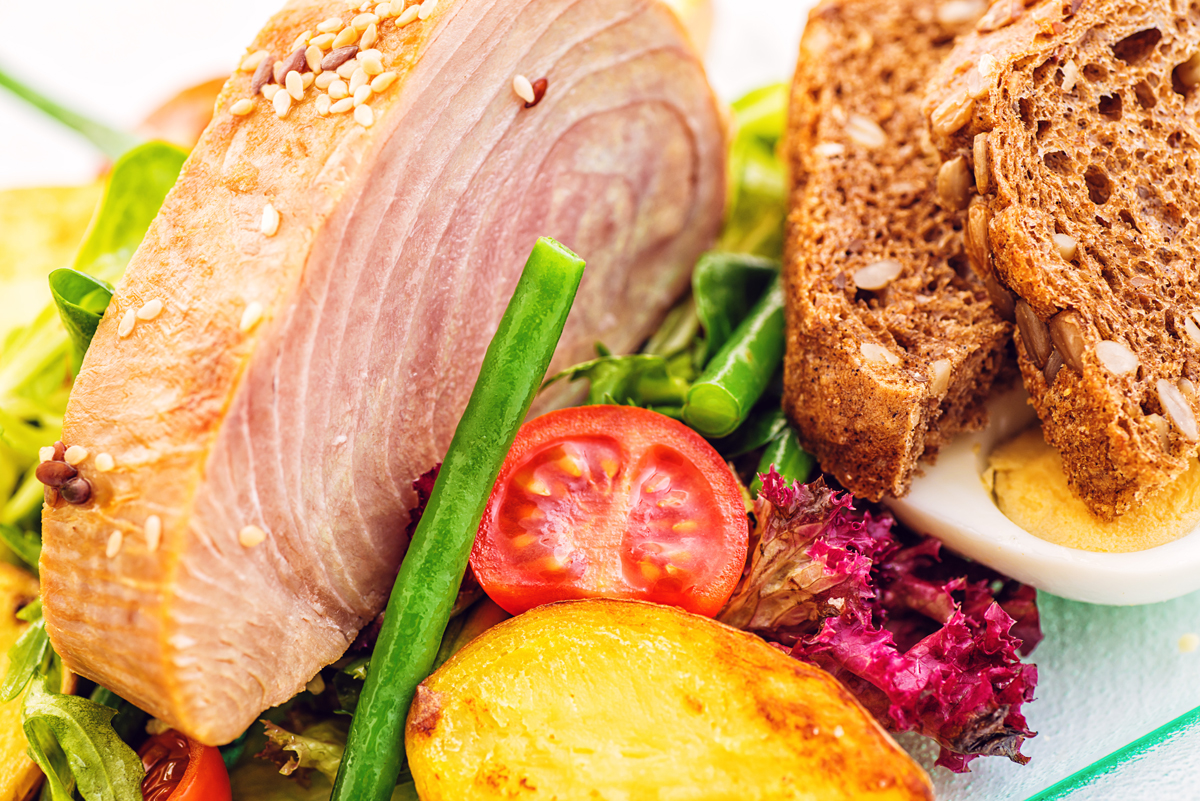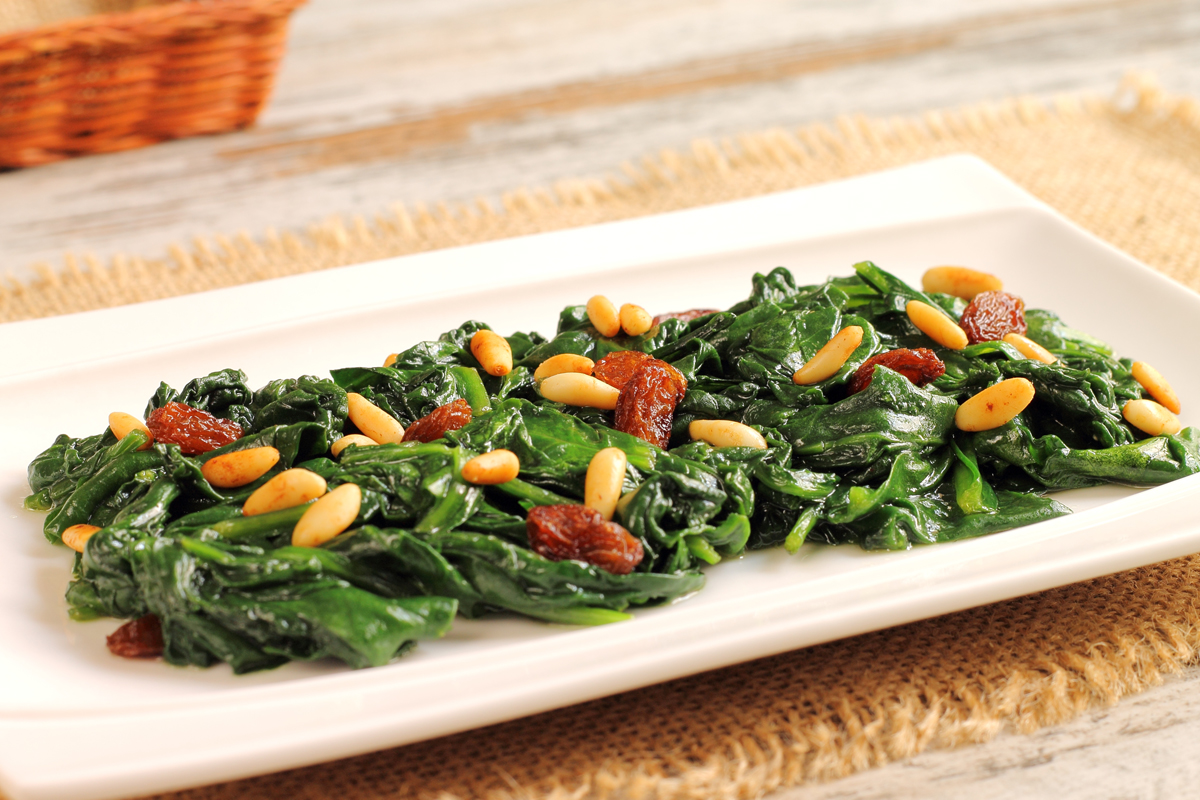Similar to a classic French niçoise salad, this Iberian version uses fresh tuna steaks rather than tinned tuna. Enjoy it for lunch or a light supper. We wouldn’t say no to a glass or two of txakoli or other dry Spanish white wine.
Ingredients
- 2 tuna steaks, each about 6 ounces
- Extra virgin olive oil, plus 1/3 cup for the dressing
- Juice of 1/2 lemon
- Coarse salt (kosher or sea)
- Freshly ground black pepper
- 12 ounces fingerling potatoes or small red potatoes
- 10 ounces green beans, trimmed
- 6 ounces small tomatoes (such as Romas), cut into wedges, or cherry tomatoes, halved
- 1/2 red onion, peeled and thinly sliced 2 to 3 large garlic cloves, minced
- 1 teaspoon pimentón (Spanish smoked paprika), or more to taste
- 3/4 teaspoon cumin
- 1/2 teaspoon hot red pepper flakes
- 3 tablespoons white wine vinegar
- 6 ounces spring greens or butter lettuce
Directions
Step 1
Brush the tuna steaks on both sides with olive oil. Drizzle with the lemon juice, then season generously with salt and pepper.
Step 2
In the meantime, heat a large cast iron skillet on the stovetop over medium-high heat and film the bottom with olive oil. Sauté the tuna steaks, turning as needed, until done to your liking. (We prefer ours medium-rare, i.e., still pink in the center.) Let rest for 3 minutes, then thinly slice each steak, removing any dark parts. Set
aside, covered and refrigerated.
Step 3
Place the fingerling potatoes in a large pot and cover with water. Boil for 10 minutes or until you are able to stick a fork through the potatoes without resistance. Using a slotted spoon, remove the potatoes from the water and transfer to a plate for now. Do not discard the water.
Step 4
Prepare a large bowl with ice water and set aside near the pot.
Step 5
In the same cooking pot, with the water boiling, add the green beans. Cook for 4 minutes or so. Drain, and immediately place the green beans in the ice bath to stop cooking. When cooled, remove the green beans from ice bath and pat dry.
Step 6
Cut the fingerling potatoes in halves lengthwise and place them in a large mixing bowl. Add the green beans, tomatoes, onions, and garlic. Season with salt, pepper, paprika, cumin, and hot red pepper flakes. Add the sliced tuna. Combine the 1/3 cup of olive oil with the vinegar and whisk. Pour the oil-vinegar mixture over the salad and toss gently to lightly coat the ingredients. Taste, then adjust the seasoning as desired.
Step 7
Arrange spring greens or butter lettuce on a nice platter and top with the dressed tuna and vegetables.
Serves 4 — Recipe adapted from the mediterraneandish.com




